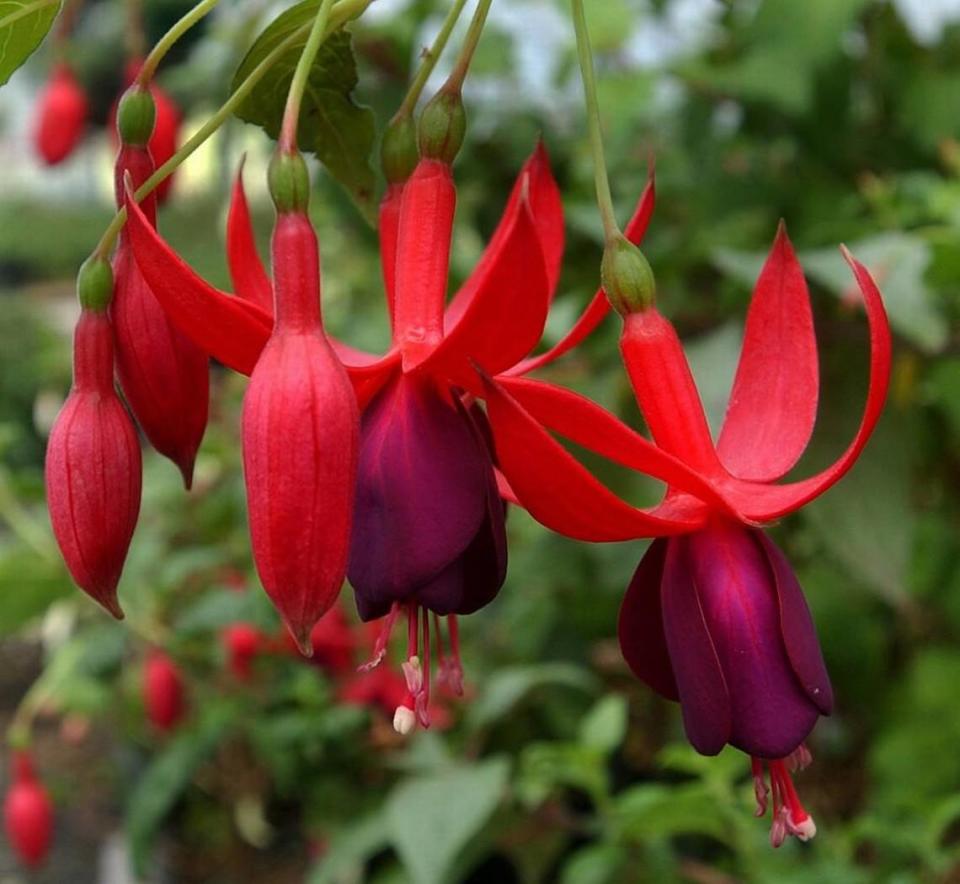Full speed ahead, PNW gardeners. Time to finish planting and fertilizing
The fourth week of May has everyone excited about summer gardening as neighborhoods explode with color.
You can still add trees, shrubs and potted perennials to the landscape but don’t’ procrastinate: You want all new plants to establish a good root system before the summer heat arrives.
If you have not yet fertilized the lawn, do this before the end of May. A well-fed lawn is better at crowding out weeds and sending down roots to find water.
Continue to plant vegetables such as cucumber, squash and beans from seed placed directly into the ground. Keep newly seeded beds well weeded so the seedlings won’t have to compete for water or nutrients.
Q. I have a fuchsia basket that I was given for Mother’s Day. The plant was full of blooms when I got it, but now it has few blooms and no buds so I don’t think it is going to flower anymore. I have kept it very well watered and it is hanging in the shade. Please help. — A.W., Enumclaw
A. The clue to this bud-less fuchsia is the part where you said you kept it very well watered. Fuchsias love moist soil and shade, but in the beginning of the summer, when the nights are still cool, too much water can cause root rot and flower drop.
Do the leaves look dull and limp? Feel the soil with a bare finger poked down to the first knuckle. If the soil is moist, do not water. As hanging baskets fill with roots they can demand water every day, but when the plants are young at the beginning of summer they can go a week or more without needing a drink. There is no set watering schedule so you have to feel the soil.
To apply first aid to your lackluster fuchsia, snip back the branches by one third. Then add fertilizer to the soil. Warmer summer weather can perk up many a pouting hanging basket, so soon you should hear “This bud’s for you.” .
Q. I want to grow roses but do not want to use a bunch of pesticides. I know roses in our area often get Black Spot disease because of our rainy weather. Are there roses that will not get this disease? — T.P., Olympia
A. I can promise you a rose garden without pesticides if you follow a few suggestions:
Plant disease resistant roses such as Queen Elizabeth, Flower Carpet Roses, Rosa rugose, or any of the pink roses with no fragrance. “Think pink with no stink” is my advice if you want to avoid Black Spot disease. Color and fragrance is linked to disease resistance.
Plant in full sun. Yes, roses will live in a partly shaded spot but they are more likely to become Black Spot magnets as their leaves will stay damp longer.
Give the plants lots of elbow room. Crowded conditions cut down on the free flow of air and good air circulation makes it hard for fungal spores to rest on the rose leaves.
Spread your roses around so that if one gets sickly it won’t pass the fungus to its neighbors. Remember that 6-foot rule during COVID? Your rose garden needs to practice social distancing.
Fertilize often, but not too often. Apply fertilizer in early spring after pruning then every four to six weeks once you see new growth. Roses are quite ravenous plants as it takes a lot of energy to make all those gorgeous blooms.
Be nosy and get snippy. Monitor the new growth so you can pinch any aphids that collect on the growth tips and study the older leaves so you can remove any foliage when you see the first sign of black spots.
Become a tidy clean freak around your rose plants. Fallen leaves and faded blooms should be removed promptly as this is where disease spores can breed. Dispose of the debris in the garbage not the compost pile.
Finally, accept some imperfection on your rose foliage but enjoy the flowers. A garden that is free of pesticides is one that will support our pollinating insects and a few spotted leaves is a small price to pay for saving the world.
Marianne Binetti has a degree in horticulture from Washington State University and is the author of several books. Reach her at binettigarden.com.



